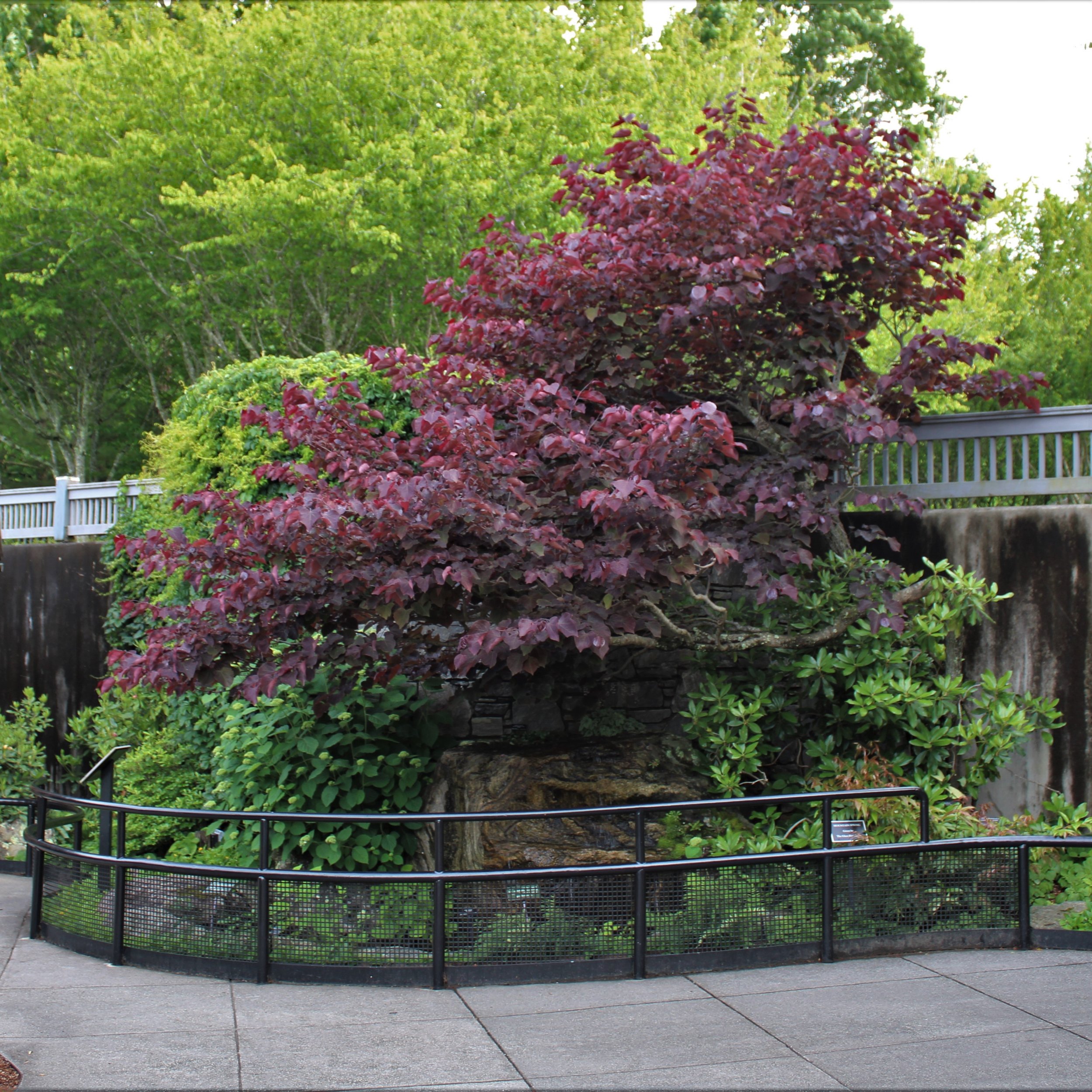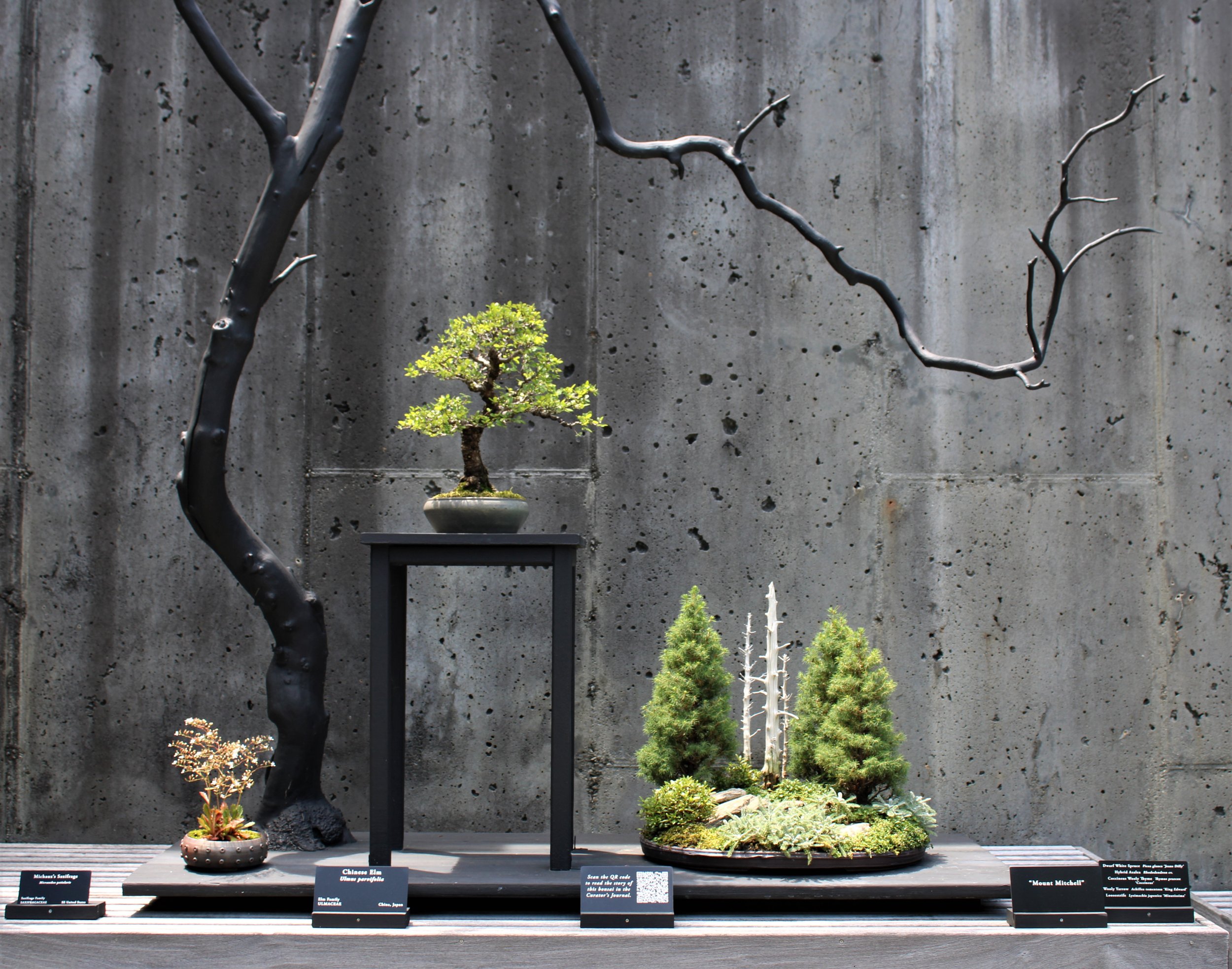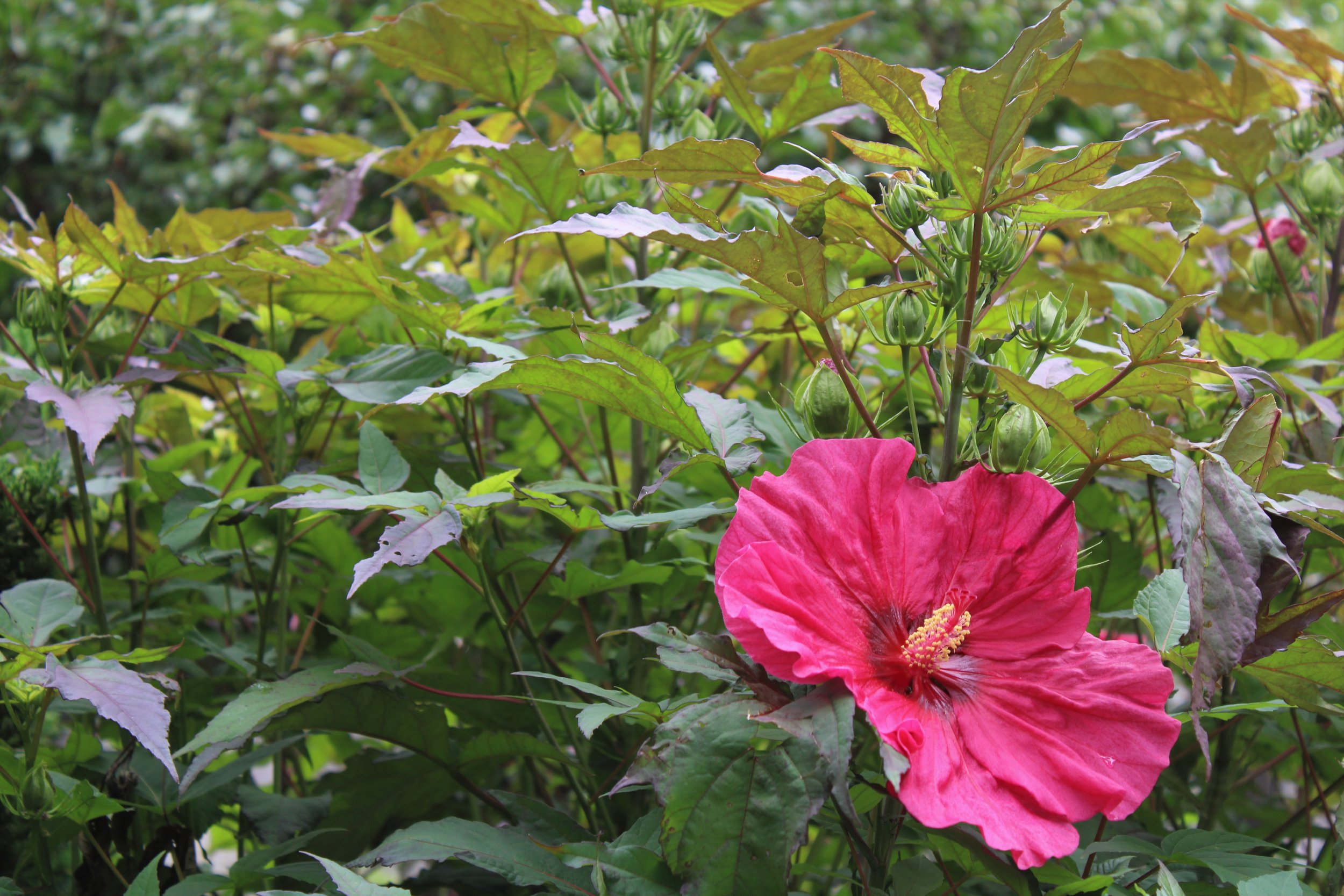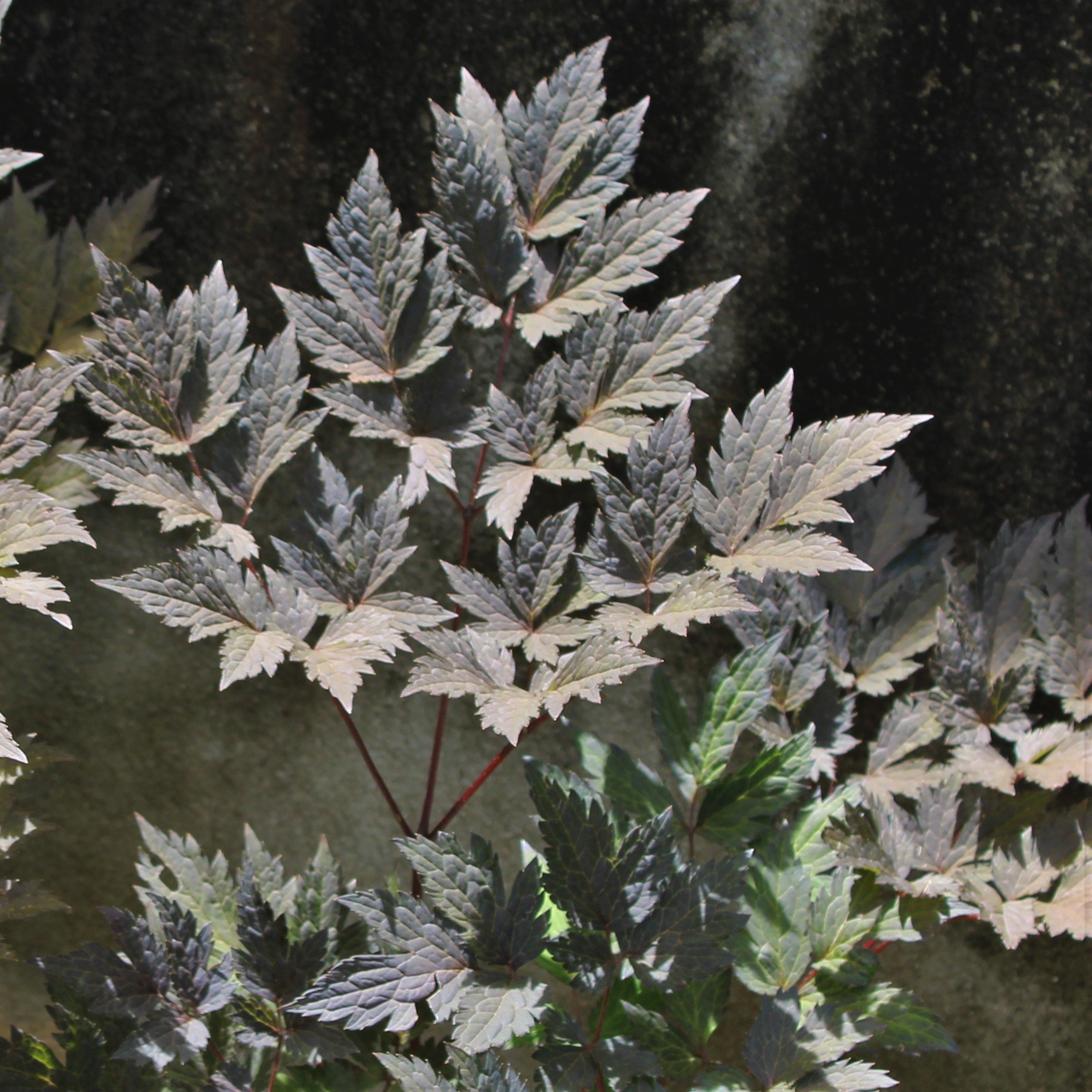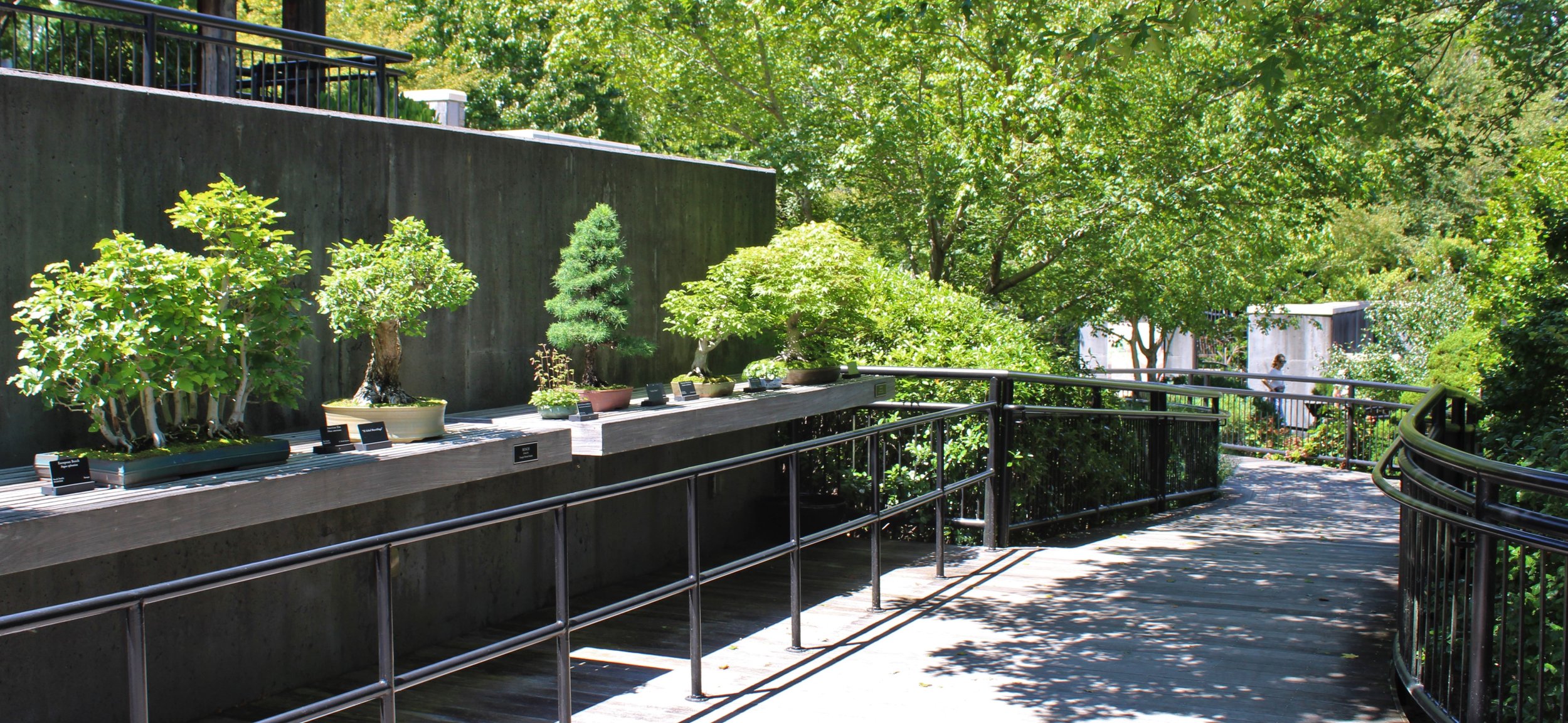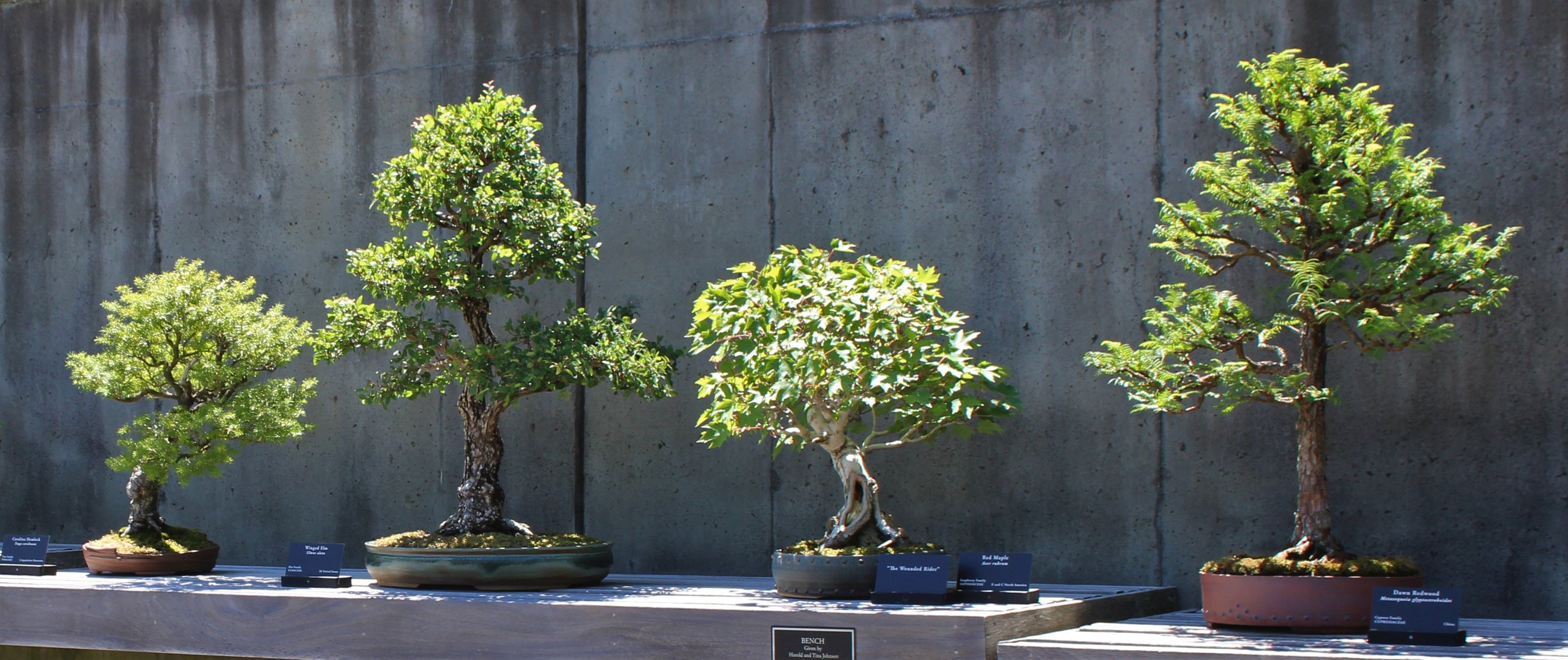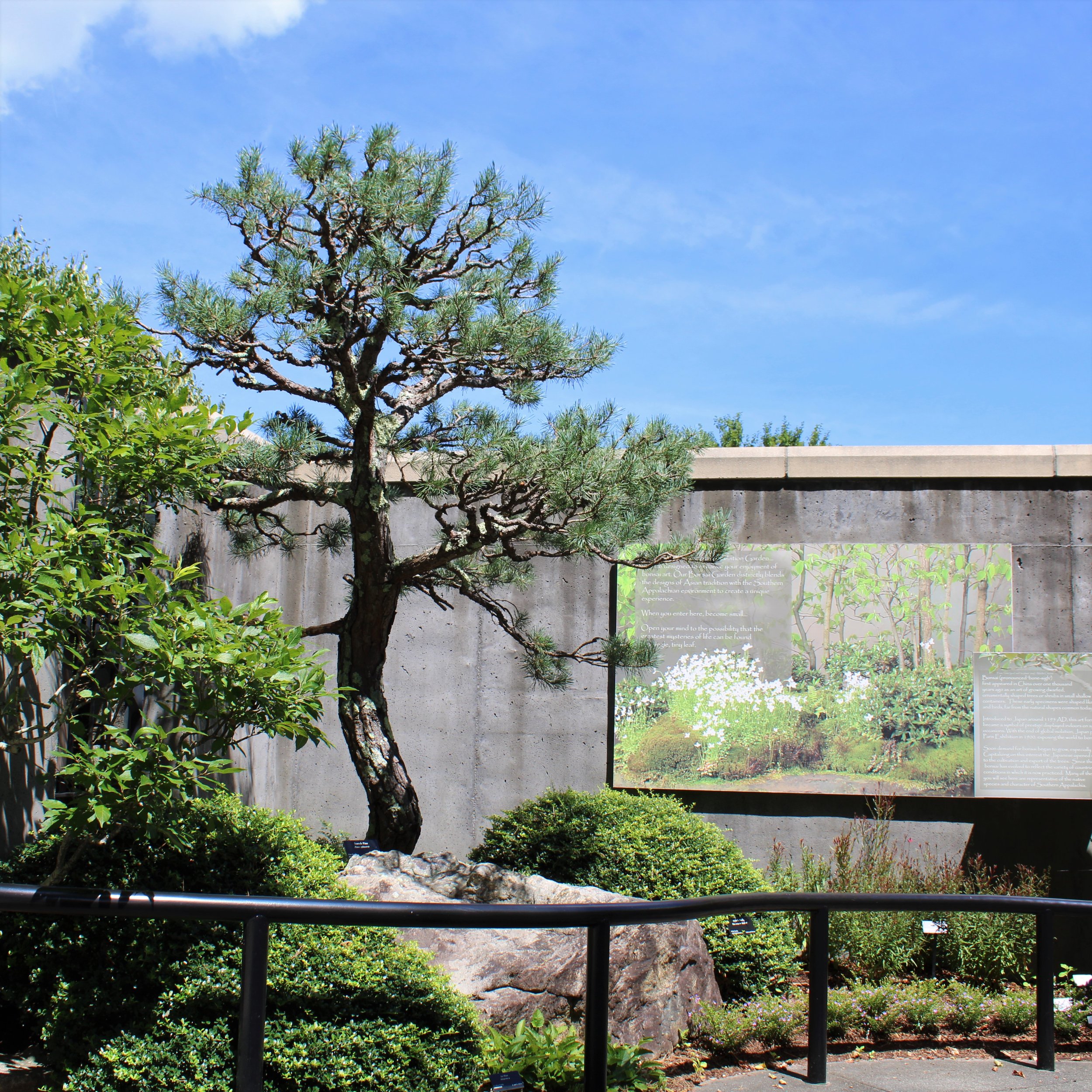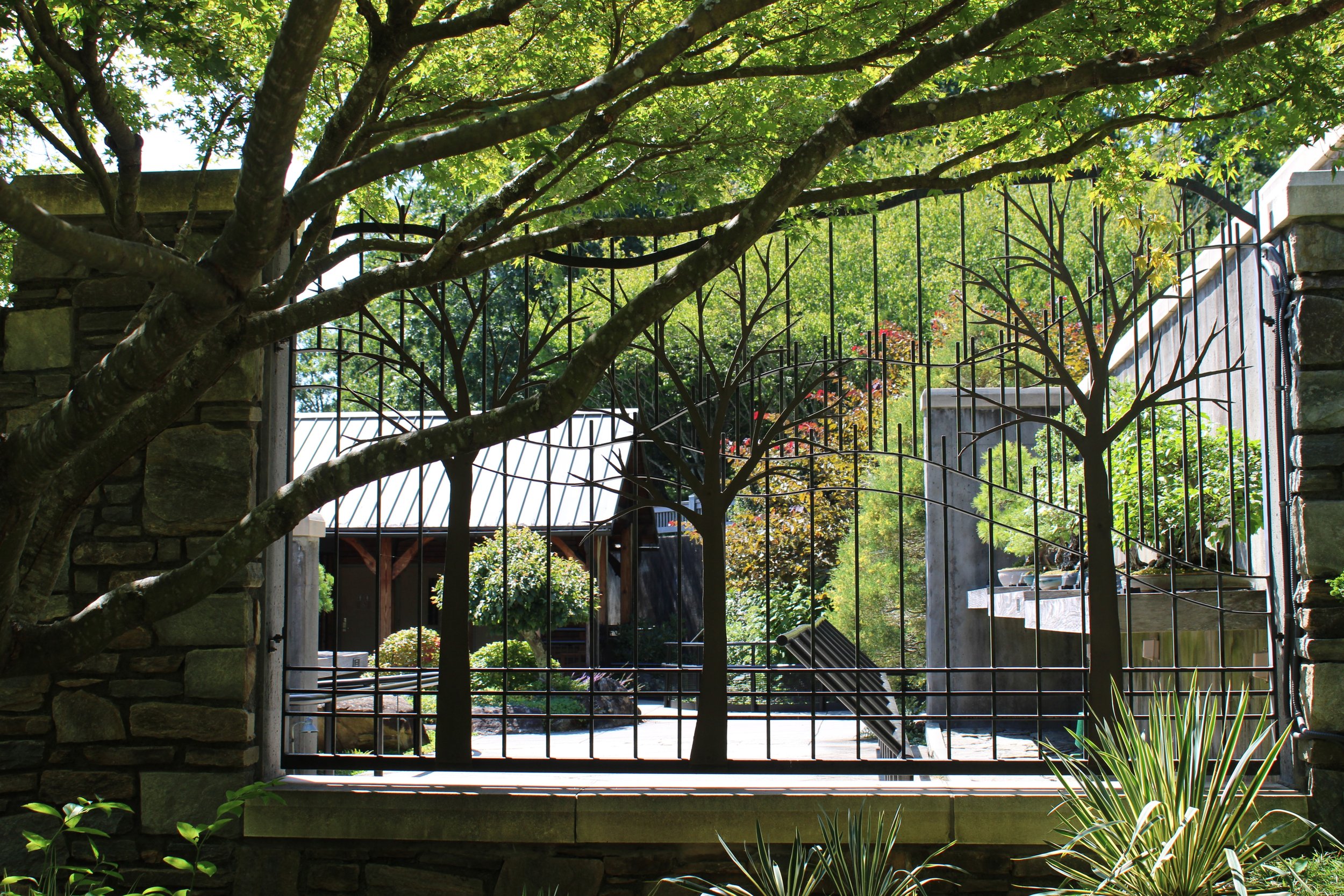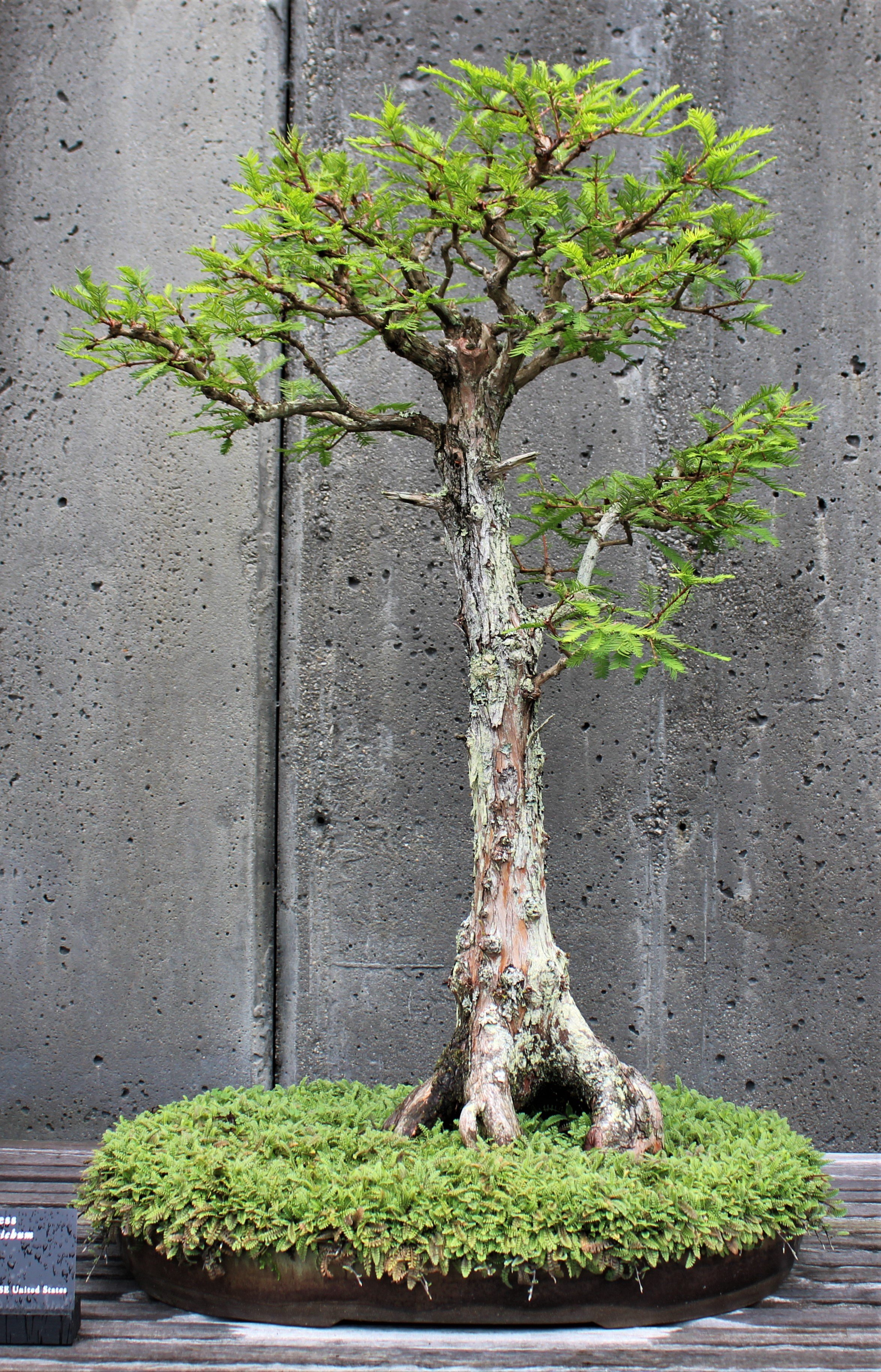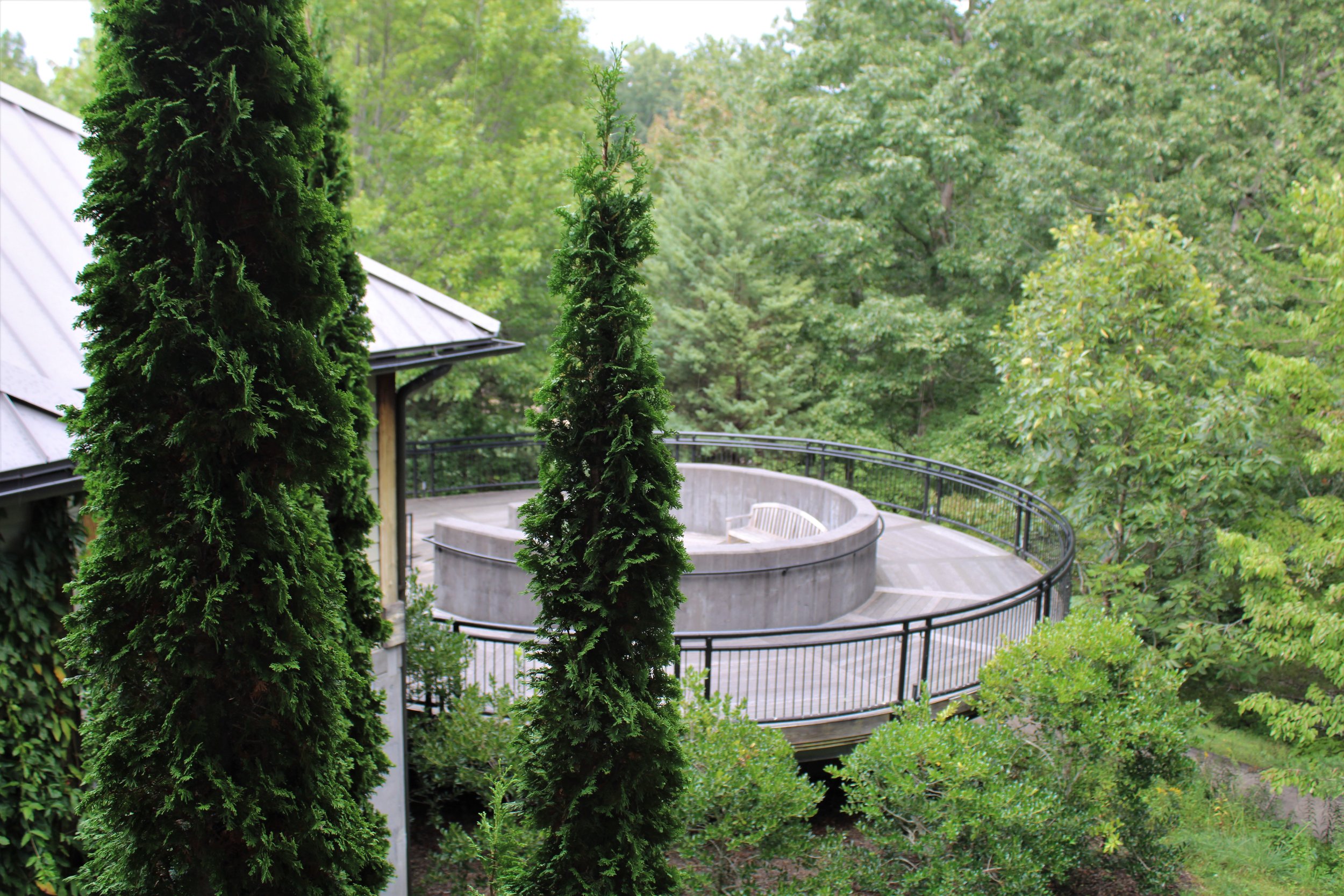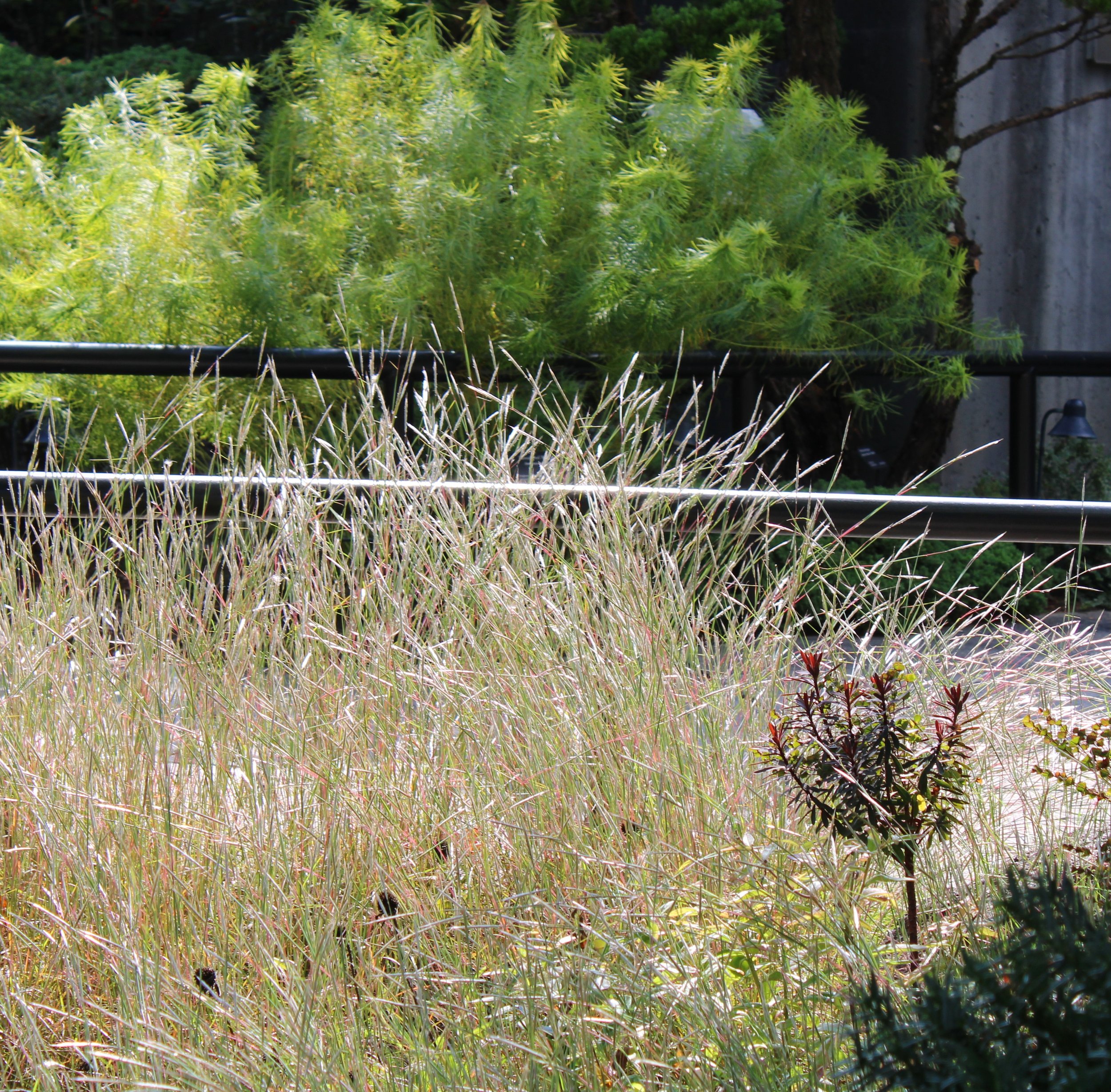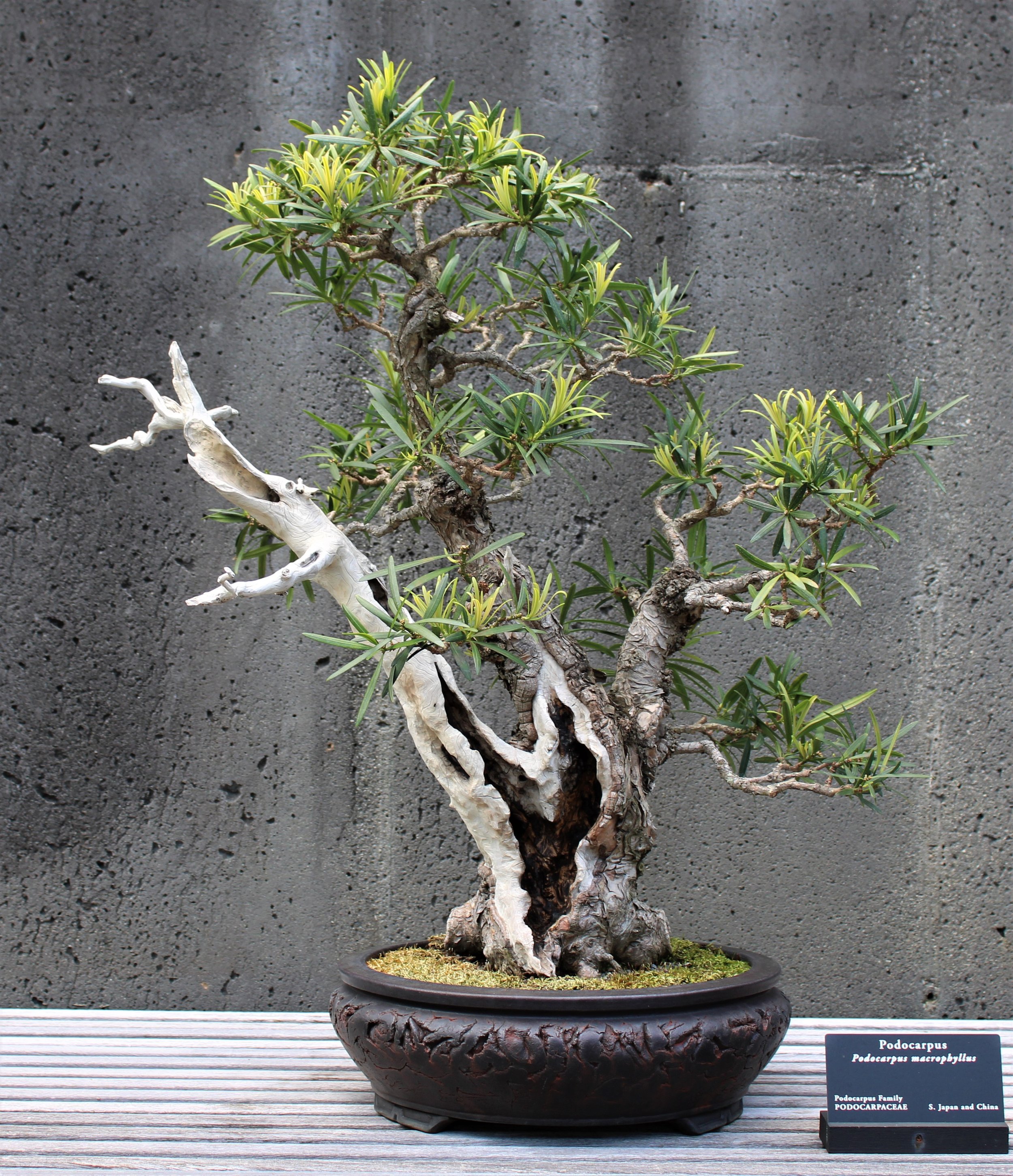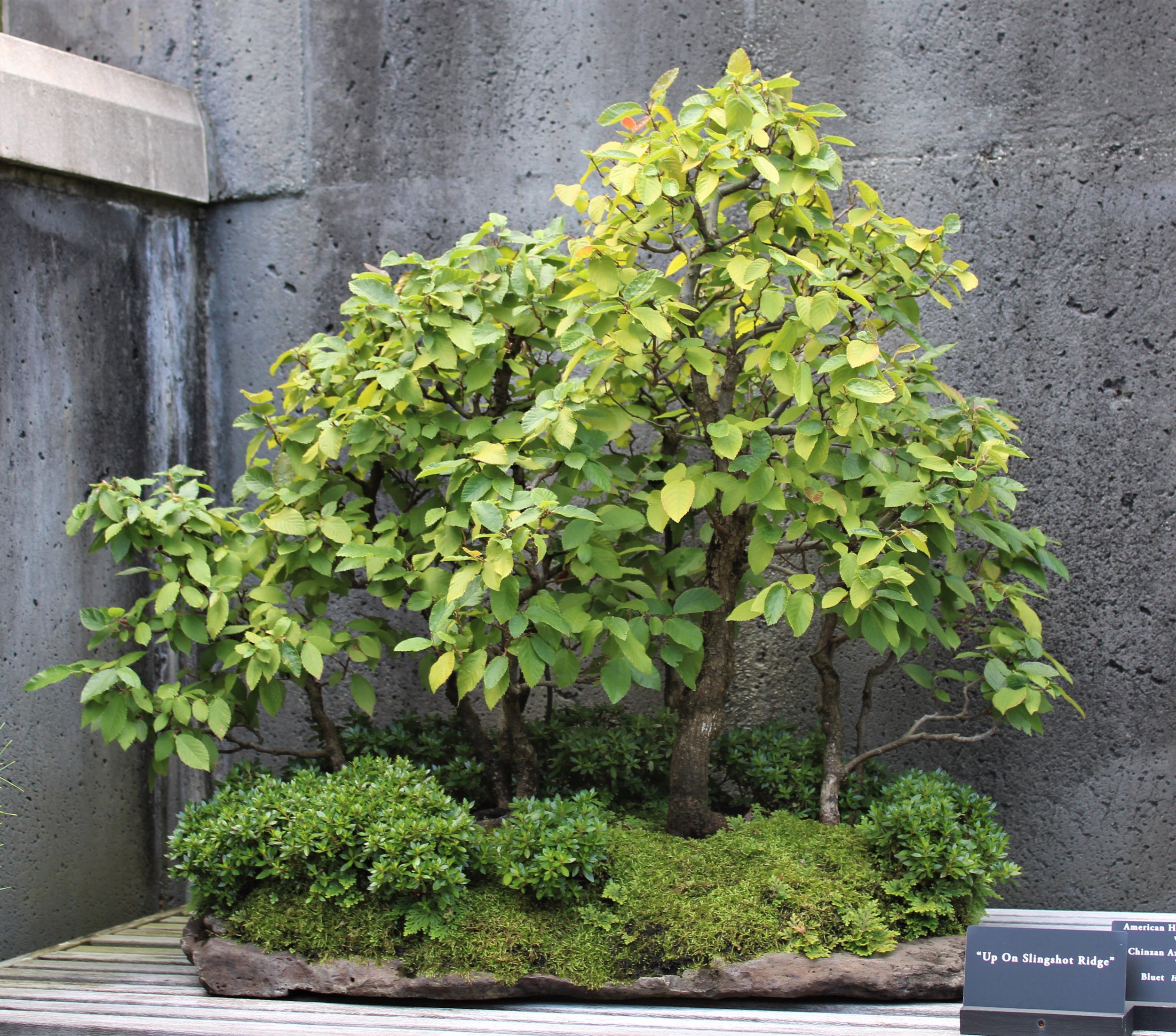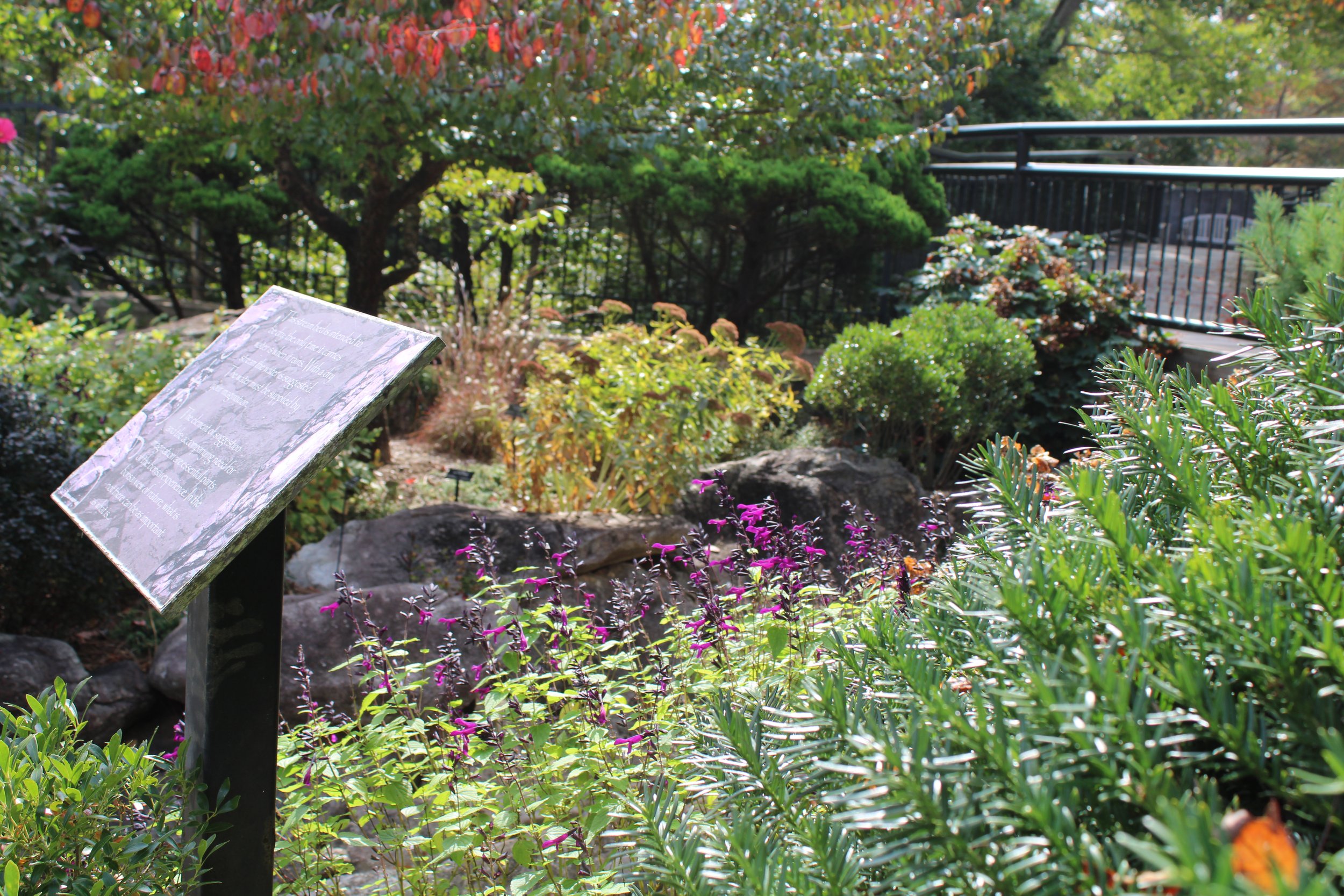Summer's Gone
It is appropriate this account of summer in the bonsai garden should show up after summer is over. There is little time for such a thing while summer is happening.
Spring comes in a rush, leading up to the second weekend of May when bonsai are once more put out on display in the garden. Immediately the work commences as new growth commands attention and watering becomes a daily routine. The garden is a showcase; the plants on display have to be kept in show-worthy condition. Not just the bonsai on display, but all the plantings in the garden itself have to be maintained at the highest possible level of presentation. There is an expectation now on the part of our visitors, whether they have previously visited or have read some of the many favorable reviews of the bonsai garden that can be found online, that a visit to the Bonsai Exhibition Garden at The North Carolina Arboretum will be a special experience. There is an expectation now on the part of those of us who work in the garden and work with the bonsai, that we will live up to the reviews and make a good impression.
The bonsai garden exists for the enjoyment and benefit of our guests. My job, shared by the bonsai assistant, the bonsai volunteers and the volunteer bonsai garden docents, is to deliver a positive experience. The summer is long and more people come to see the little trees during that time period than at any other. The summer is a time of great demand, to be met in labor performed under a burning sun, in sometimes smothering heat and sticky humidity.
The bonsai on display start out scantily clad in the freshest new green of spring, or even temporarily bare of foliage for having just emerged from the overwintering refrigerator. They look so tidy then. Before you can say "how pretty," the lighter greens of spring give way to the darker greens of the growing season, while leaves that start out the size of a mouse's ear gradually enlarge and multiply. Soon the crowns of the bonsai fill in and the view of the structure of the trees — the trunks and branching — becomes obscured. Left to go on this way, the bonsai begin to turn into green-headed mops with crooked handles, and the appeal of them, the magic of which they are capable, begins to diminish. The illusion depends on maintenance in the form of pruning. The pruning is necessary because the plant is not voluntarily a bonsai, but an ordinary plant that wants to do just one thing during those months we call the growing season. The plants want to grow and need to grow in order to be healthy, but unrestrained growth spoils them for their purpose. That's when the humans with scissors go to work.
All summer long the bonsai on display need to be kept presentable. Some of the trees need pruning only a couple of times during the growing season, but there are just a few of those and they are offset by others requiring trimming on a virtually weekly basis. Most bonsai fall somewhere between those two extremes in terms of pruning needs. Still, on average the display pieces each get pruned a half dozen times or so over the course of the summer and there are approximately forty trees on display at any time. Those forty trees represent only a fraction of our holdings. Other bonsai not on display also need maintenance so they might be ready to go out on display as needed or desired. Summer is pruning time from start to finish.
If there is any task more constant and critical in summer than keeping the bonsai trimmed, it is keeping them all properly watered. We go to lengths to ensure that no bonsai in our collection needs to be watered more than once per day. There are bonsai people who water their trees two or even three times daily when the weather is hot and sunny because they choose to grow their bonsai in medium that has incredibly sharp drainage. Our bonsai medium is designed to retain some degree of moisture for twenty-four hours after the plant has been watered, even in the dog days of August. It might be that after twenty-five hours all the moisture is gone, but it's on us to make sure the trees never go that long without being checked for watering needs. Aside from the knowledge that's required to make an accurate call concerning whether to water or not, it takes time just to go through the entire collection to assess need.
Additionally, all the bonsai must be continually monitored for insect and disease damage. In summertime the pressure from those two concerns is relentless, and any problems we discover require a prompt response in order to maintain both the health and presentability of the plants. Vigilance is essential in this regard, because by the time an insect or disease problem becomes easy to see you are already behind the curve. Pesticide application takes time, too, in addition to being unpleasant and potentially dangerous.
That is just what the bonsai require. The garden presents all the same considerations, played out over a greater area. A plant in a pot and a plant in the ground are two distinctly different entities and are therefore handled differently, but the primary concerns are largely the same. Pruning of landscape plants in the bonsai garden is perhaps not as intensive as for the bonsai themselves, but there is more plant material overall in the landscape than there is growing in pots. And every woody plant in the garden takes pruning. The character of the bonsai garden is largely determined by how the woody plants in the landscape are managed. Some of the landscape trees have attained size over the years, so keeping them in good trim takes considerable effort and the use of specialty tools like extension pruners and orchard ladders. Non-woody plants take time and attention as well. Perennials and annuals need deadheading, thinning and occasional propping up, and the weeds never rest.
We try not to water landscape material in the garden. An exception is made for newly planted material, which requires some assistance from the hose between rain events until roots are established and the plant can fend for itself. This past summer we were fortunate with our allotment of rain. Although there were occasional periods where we dried out a little, there was no time of true drought. When you look at the bonsai garden and see how lush and full of plant life it is, and then consider that no supplemental irrigation is employed, it shows what great results can be attained by choosing plants that can thrive in the conditions of the site. Maintaining soil health and mulching generously makes a difference.
We try to strictly limit the amount of pesticide applied to the garden landscape. Sometimes in summer spraying is necessary and we do it, but we maintain a certain level of tolerance for the presence of pests because we respect the garden as a tiny piece of the living earth. The need for plants in the bonsai garden landscape to be managed for cosmetic perfection is less than what it is for the bonsai specimens, but greater than what is expected of most landscapes. The bonsai garden is intensively managed in an environmentally sensitive way and this is reflected in the beauty found there, as well as the abundant diversity of wildlife. It takes a lot of time and effort to run the garden that way but we take pride in doing so.
That is what we do in the summertime. There is more than that, but the activities described above are paramount and seemingly ceaseless. There are times when the growing season feels never-ending, like the pruning and watering and close monitoring of the display trees and the garden landscape goes on forever. Nothing goes on forever, though.
One day you walk into the garden and notice the color of the plants is subtly changing, as the temperature starts moderating and the hours of daylight noticeably dwindle. Plant growth slows down, so the need for pruning begins to abate. Water needs diminish. Somehow it all comes as a surprise, even though it happens just so every year. For the better part of five months keeping up with the little trees and the garden feels like a Sisyphean task, and then one day you find the stone you're rolling is getting smaller, lighter. One day you walk into the garden and realize nothing needs watering and nothing needs pruning. It's not as if there is nothing more to do — autumn has its chores and winter does, too — but the crush of the growing season is over. That which once seemed eternal has passed into memory.
Summer is where the action is. Summer is alive and vibrant, demanding and exhausting. This was the thirty-first summer of bonsai at the Arboretum, the eighteenth summer in the bonsai garden. It was a good one, and now it's officially over.
All images from the 2023 growing season.


